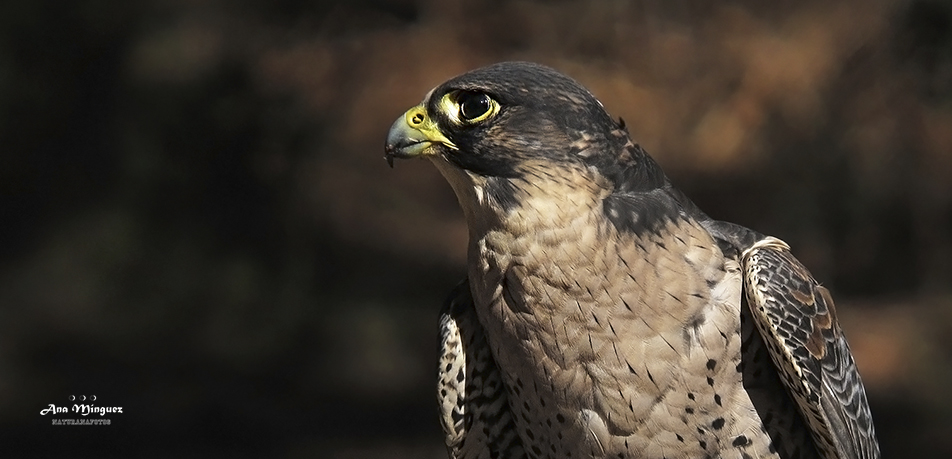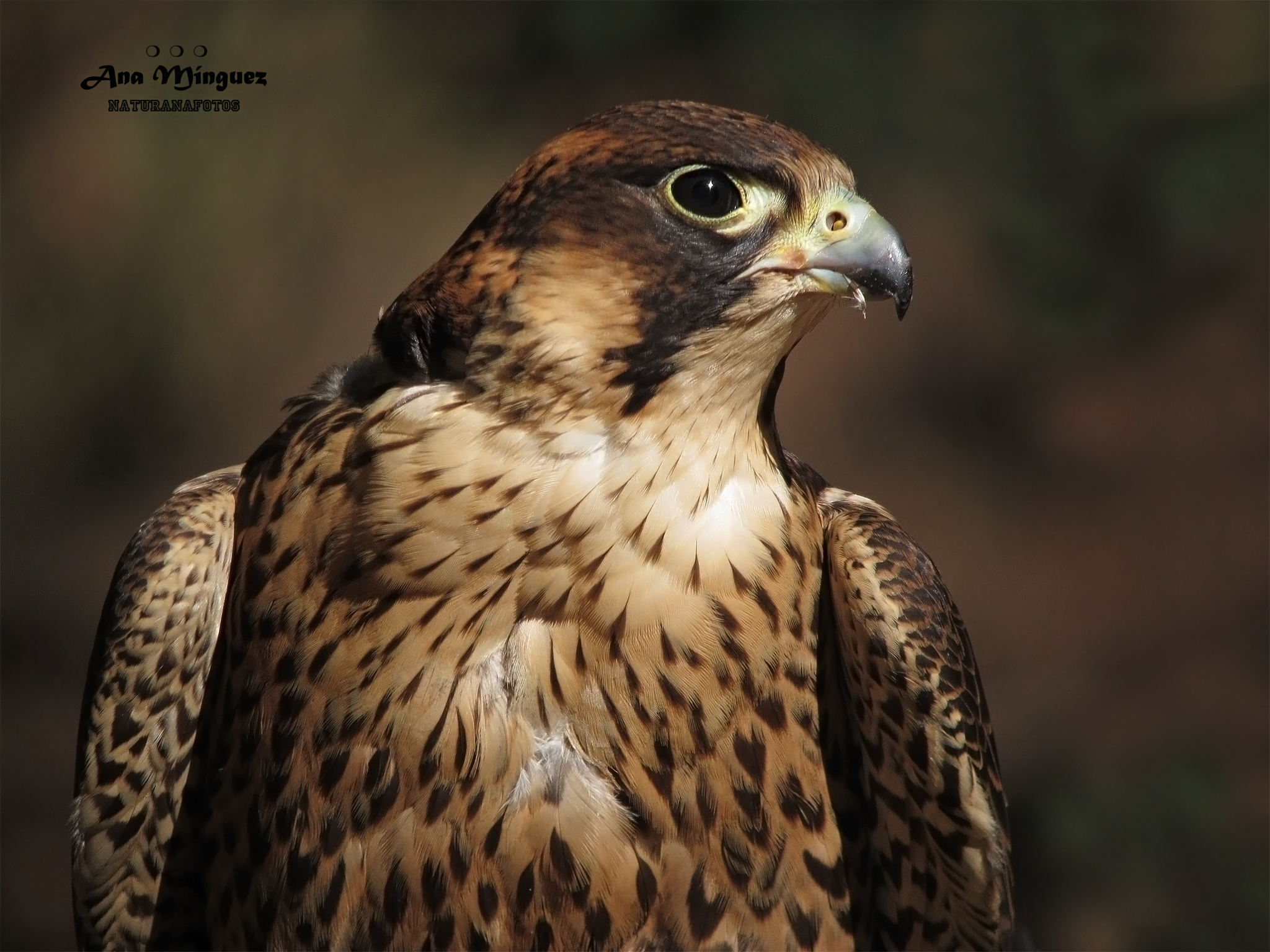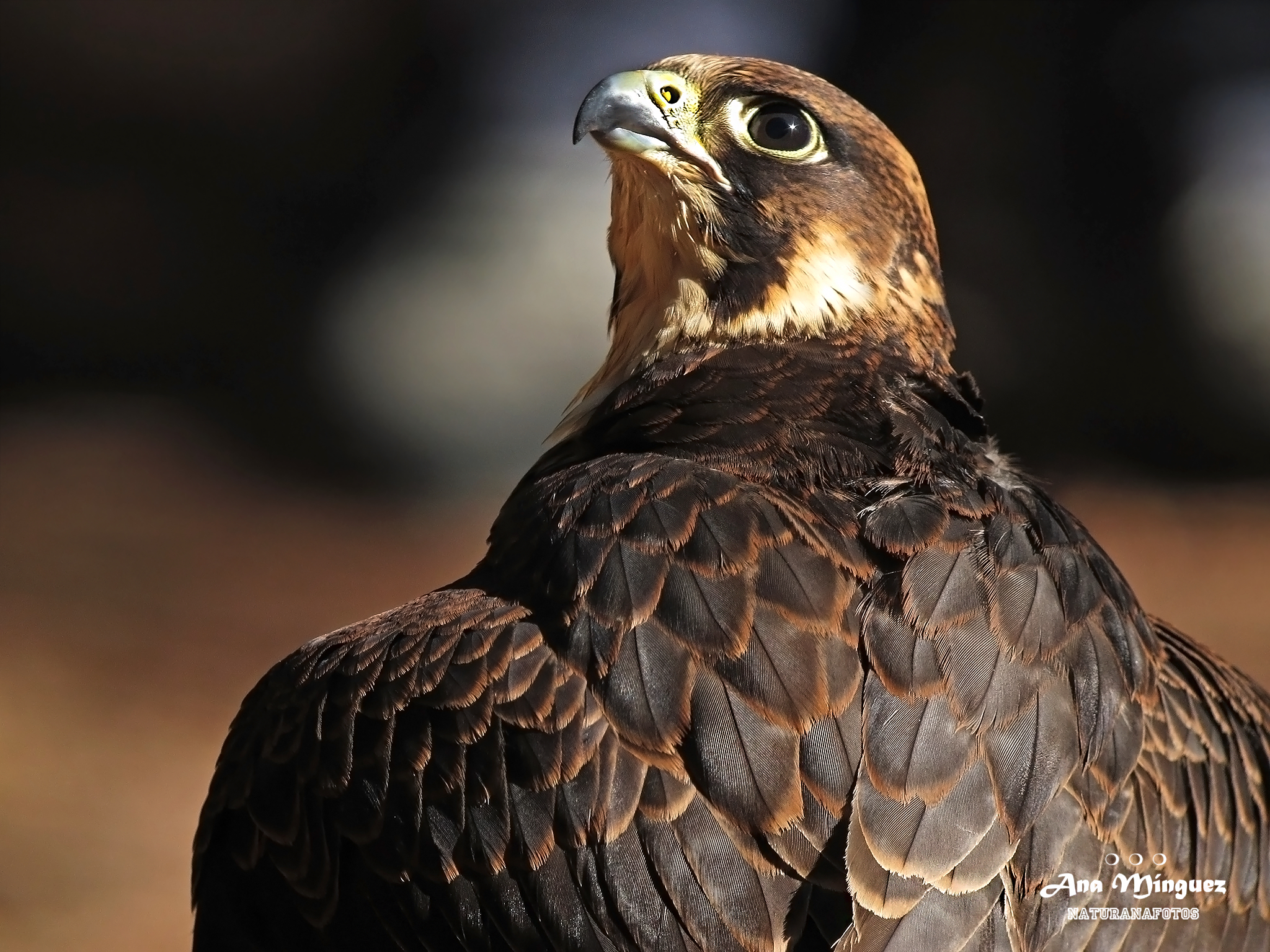The Peregrine Falcon: A Feathered Fighter Jet

By Jose Luis Gallego, environmental communicato (@ecogallego)
The sight of a peregrine falcon on the hunt, silhouetted against the sky, or perched high on a rocky cliff, eyeing the horizon to locate its prey, is incredibly exciting to nature lovers, especially those with an interest in ornithology.
This stunning bird of prey is among the most spectacular representatives of the Iberian avifauna. The peregrine is a medium-sized falcon, strong and solid in appearance. The rounded head seems to cling directly to the chest, given the shortness of the neck. Trailing from the beak and down the neck are the bird’s distinctive “sideburns”. The chest feathers are white with black bands. In young peregrines, these feathers have a reddish hue. Adult birds have a metallic blueish black back, whereas in fledglings these feathers are grey-brown.

A peregrine falcon. Photograpy: Ana Mínguez
As is commonly the case with raptors, female peregrine falcons can be up to three times larger than males. Whereas females can weigh over a kilo and reach a body length of 50 cm, males are about 40 cm long and rarely weigh more than 700 g. Their wingspan, the distance from wing tip to wing tip, ranges from 80 to 120 cm.
The beak of a peregrine falcon—short, thick, and steel-like—is one of nature’s most perfect tools. Sharp as a scalpel, it sports a tooth at the tip which greatly increases the raptor’s ability to tear into its prey. The wings of a peregrine are made for chasing other birds across the sky, making sudden turns and high-speed dives. Its powerful claws are specifically designed for hunting other birds mid-flight. The toes are fine and clean and end in blade-like talons that sink into the prey’s body like a knife into butter.
The chances of spotting a peregrine falcon perched somewhere, and observing it for a while, are very rare. This raptor usually establishes its territory in remote rugged areas with rocky mountainous terrain that isn’t easily accessible. Peregrine falcons enjoy stringent legal protection, and their scarce populations are closely monitored to keep them safe from poachers who covet this valuable bird: during the Middle Ages, princes and noblemen saw falcons as a living treasure and offered genuine fortunes for possessing and keeping them in captivity.
The best way of identifying the peregrine falcon is to recognize its flight silhouette. The wings of the falcon are long, streamlined, tapered to a sharp tip, which contrasts with the narrowness of its tail. Some ornithologists have compared certain features to that of the swift (save for the obvious differences).

A peregrine falcon. Photografy: Ana Mínguez
Also known as the prince of the raptors, the peregrine falcon is a consummate mid-flight hunter. The wind usually indicates the best direction from which to ambush its prey. Taking advantage of the other bird’s blind spot (the peregrine only hunts birds), the raptor uses its sharp back talon to deliver a lethal blow. In most cases, it will then scoop up its dead prey in mid-air before landing on the ground. With good tailwinds, a perfectly moulted adult peregrine falcon can reach speeds of 300 km/h during its hunting stoop (the steep dive in pursuit of prey), turning this raptor into a veritable feathered fighter jet.
The natural territory of a falcon is the high moorland found in major river valleys. That said, they also seek out rocky bluffs along the coast from whose heights they establish the largest hunting grounds imaginable. In Spain, peregrine falcon populations are distributed throughout the territory, from the Cantabrian coast to the craggy cliffs of the African Mediterranean. The river valleys of the Meseta Central, the large plateau in central Spain, are home to the greatest number of falcon pairs.
In recent years, however, the population has been growing in urban areas. Peregrine falcons are an increasingly common sight in cities like Lugo, Malaga, San Sebastian, Cáceres, Burgos, Barcelona, and Madrid, of course, which boasts one of the largest colonies in Europe with around 15 active nests. Their presence in metropolitan areas helps maintain a balance between species and encourages natural selection, because falcons generally prey on sick pigeons, seagulls, parakeets, and other birds whose populations might otherwise become too abundant in cities.
Peregrine falcons usually begin their courtship season in February. They prefer cliff ledges for their nests, also known as scrapes, which can be identified by the white fecal spots they use to mark their sites. Each clutch contains between two and four eggs. The chicks are born in early May and leave the nest in mid-June.
